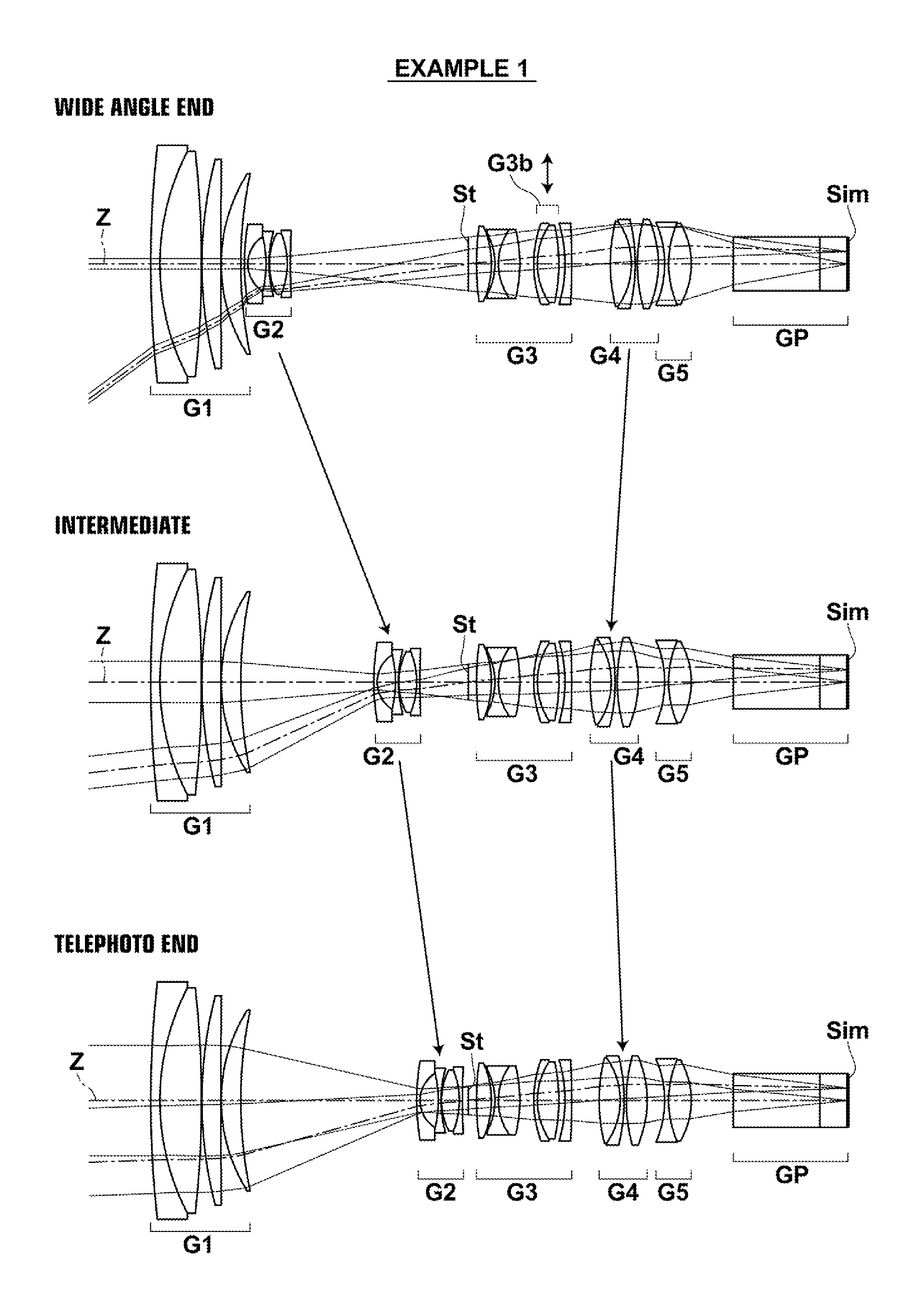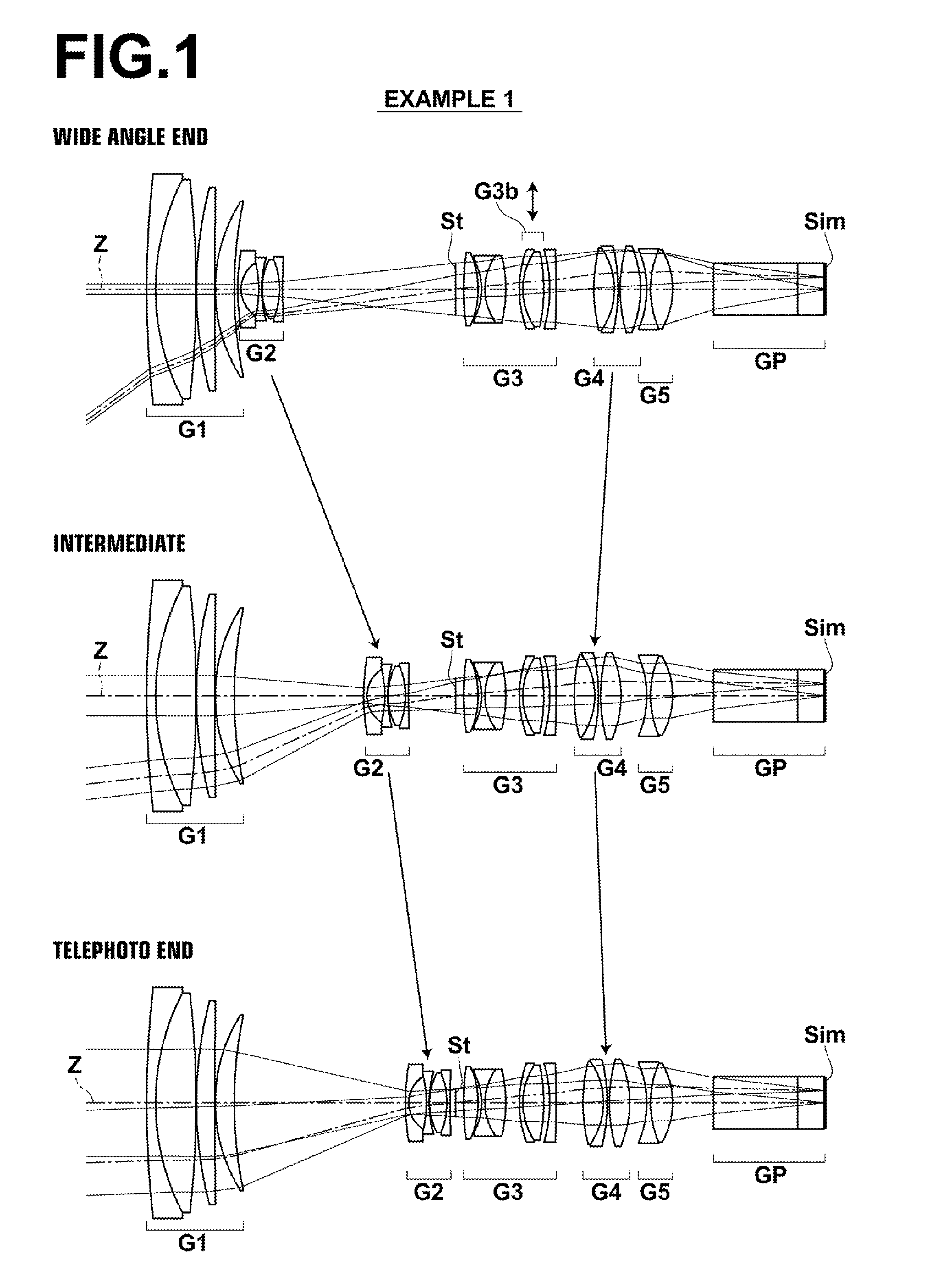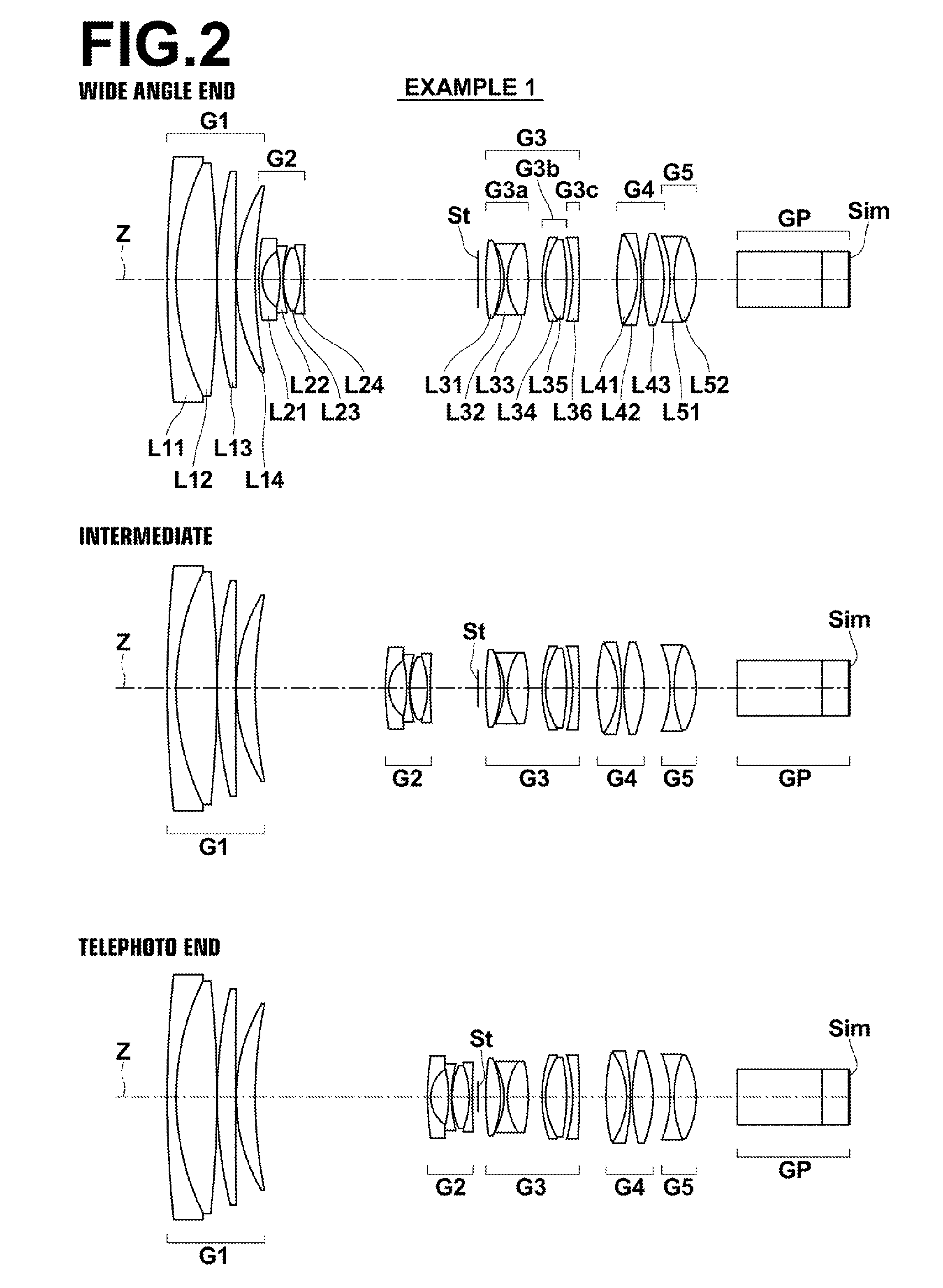Zoom lens and imaging apparatus
a technology applied in the field of zoom lens and imaging apparatus, can solve the problem of unsuitable zoom lens, and achieve the effect of convenient image and compact configuration
- Summary
- Abstract
- Description
- Claims
- Application Information
AI Technical Summary
Benefits of technology
Problems solved by technology
Method used
Image
Examples
example 1
[0091]FIG. 2 shows a cross-sectional view illustrating the lens configuration of an imaging lens of Example 1. In this FIG. 2, the upper stage, the middle stage, and the lower stage respectively shows the arrangement and configuration of each lens group in the wide angle end, those in the intermediate position (the intermediate focal length position), and those in the telephoto end. In FIG. 2, the left side is the object side, and the right side is the image side. Further, the state in which the zoom lens is focused on the object at infinity is shown. FIG. 2 also shows the example in which the optical member GP as described above is disposed between the lens system and the imaging plane Sim.
[0092]The schematic configuration of the zoom lens in Example 1 is as described below. This zoom lens is constituted by a first lens group G1 having a positive refractive power, a second lens group G2 having a negative refractive power, an aperture stop St, a third lens group G3, a fourth lens gr...
example 2
[0116]The lens configuration of the zoom lens of Example 2 is shown in FIG. 3. The schematic configuration of the zoom lens of Example 2 is substantially the same as that of the zoom lens of Example 1 described above.
[0117]Tables 4, 5 and 6 respectively show basic lens data, data related to specs and changes in magnification / focusing, and aspherical surface coefficients of the zoom lens of Example 2. FIG. 9 shows the respective aberration diagrams of the zoom lens of Example 2.
TABLE 4Example 2 / Lens DataSiRiDindjνdj(Surface(Radii of(Distances Between(Refractive(AbbeNumbers)Curvature)Surfaces)Indices)Numbers)156.84390.521.8051825.42213.96382.401.4970081.543−61.90070.02423.13161.011.4970081.545238.12870.02610.10211.101.8040046.58727.3592DD[7] 814.27960.191.8830040.7691.89111.0210−7.14470.171.8830040.76116.82410.02123.87680.981.8466123.7813−5.21510.181.8348142.7314126.2615DD[14]15(Stop)∞0.47*1638.26240.771.5831359.46*17−6.19290.2118−3.64580.201.8450143.50194.04351.101.8150724.2520−9.646...
example 3
[0118]FIG. 4 shows the lens configuration of the zoom lens of Example 3. The schematic configuration of the zoom lens of Example 3 is substantially the same as that of the zoom lens of Example 1 described above, but differs in the configuration of the third-a lens group G3a. That is, in the zoom lens of Example 1, the 32 lens L32 and the 33 lens L33 in the third-a lens group G3a are cemented to each other and both surfaces of the 31 lens L31 are aspherical surfaces, whereas in the zoom lens of Example 3, the 31 lens L31 and the 32 lens L32 are cemented to each other and both surfaces of the 33 lens L33 are aspherical surfaces.
[0119]In the zoom lens of Example 3 as well, the 31 lens L31 and the 32 lens L32 are cemented to each other. Accordingly, the joint surface formed thereby enables longitudinal chromatic aberration to be corrected.
[0120]Tables 7, 8 and 9 respectively show basic lens data, data related to specs and changes in magnification / focusing, and aspherical surface coeffic...
PUM
 Login to View More
Login to View More Abstract
Description
Claims
Application Information
 Login to View More
Login to View More - R&D
- Intellectual Property
- Life Sciences
- Materials
- Tech Scout
- Unparalleled Data Quality
- Higher Quality Content
- 60% Fewer Hallucinations
Browse by: Latest US Patents, China's latest patents, Technical Efficacy Thesaurus, Application Domain, Technology Topic, Popular Technical Reports.
© 2025 PatSnap. All rights reserved.Legal|Privacy policy|Modern Slavery Act Transparency Statement|Sitemap|About US| Contact US: help@patsnap.com



